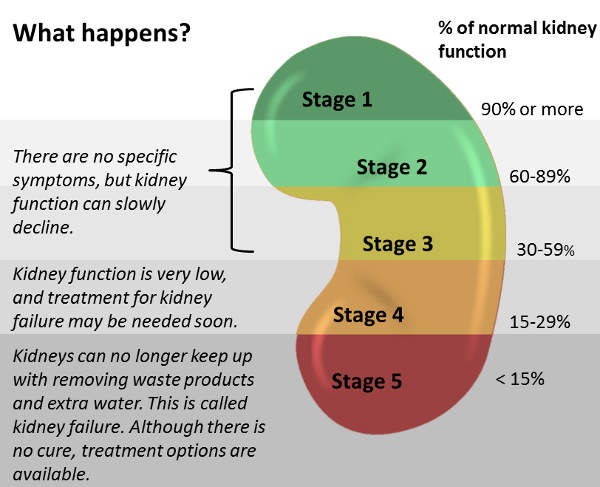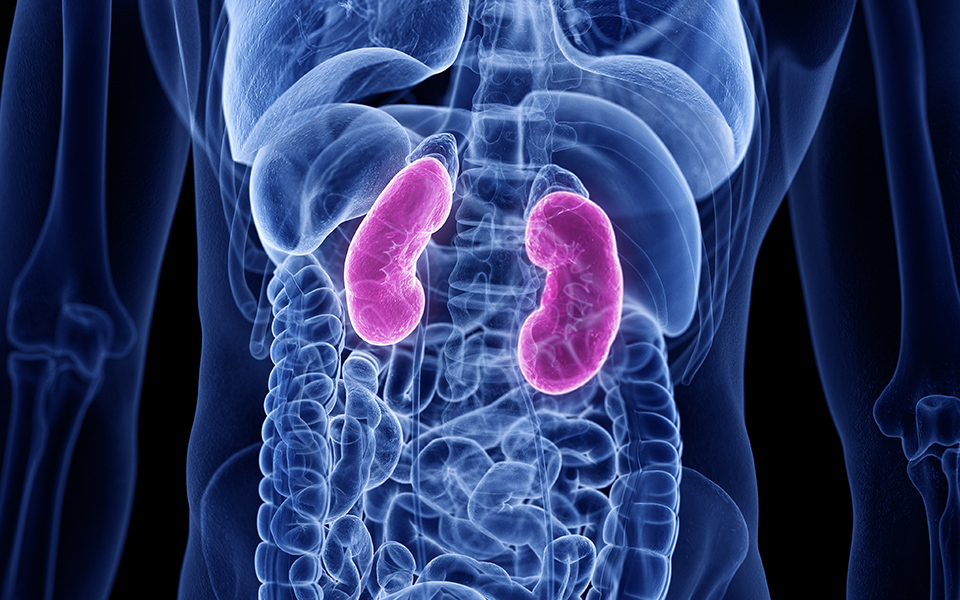Damaging the kidneys can cause severe issues and look different in each person. This post will discuss how the kidney may become damaged and the different types and stages of kidney disease.
Most kidney diseases attack the nephrons (the filtering system in our kidneys), causing them to lose their filtering capacity. Certain medical conditions, like shock or a heart attack, can damage our nephrons at a more rapid rate. Still, most kidney diseases destroy the nephrons slowly, silently, and gradually over time. To get started, we will discuss the most common causes of kidney disease.
Diabetes is a chronic, metabolic disease characterized by elevated levels of blood glucose (or blood sugar), which over time, leads to severe damage to the heart, blood vessels, eyes, kidneys, and nerves. If sugar stays in a person’s blood instead of breaking it down, it acts like a poison. High blood sugar levels over a long period can damage the kidneys’ blood vessels, causing them to leak protein into the urine and reducing their ability to filter waste and excess fluid from the blood. Damage to the nephrons from diabetes is called “Diabetic Nephropathy.”
High blood pressure can damage the small blood vessels in one’s kidneys. Damaged blood vessels have a reduced ability to filter waste and excess bodily fluids from the body. Diabetes and high blood pressure are the two leading causes of kidney disease in the United States.
Glomerulonephritis (glow-mare-you-low-neh-fry-tis) causes inflammation of the glomeruli, a part of the nephron that removes small waste particles, other solutes, and water from the blood, resulting in chronic renal failure.
Now that we have discussed the significant causes of kidney damage. Let’s look at the types and stages of the disease.
Kidney disease comes in three diagnoses: Acute Kidney Injury, Chronic Kidney Disease, and End Stage Renal Disease. According to the CDC, more than one in seven US adults have chronic kidney disease, roughly fifteen percent of the population. It is estimated that as many as nine in ten adults with kidney disease do not even know they have it.
Acute Kidney Injury (AKI) is a sudden episode of kidney failure or kidney damage that can happen in a few hours or a few days. In addition, AKI can affect other organs in the body, such as the brain, heart, and lungs. Depending on the severity, acute kidney injury can sometimes be reversed in certain situations with treatment.
Chronic Kidney Disease (CKD) is permanent kidney damage due to injury or disease. Chronic kidney disease ranges from stage 1 (mild) to stage 5 (severe), requiring renal replacement therapy. CKD causes progressive damage to the kidneys over time. However, if the disease is discovered early, treatment of the underlying diseases which cause it, such as diabetes or hypertension, can be treated to help slow the progression of CKD.

End Stage Renal Disease (ESRD) is the 5th and final stage of chronic kidney disease in which the kidneys can no longer support proper body function. The permanent loss of kidney function and the need for permanent dialysis or a kidney transplant characterizes it. ESRD can lead to a buildup of waste and fluid in the body and causes symptoms such as fatigue, weakness, and decreased mental alertness. Additionally, the ESRD disease process decreases immune system function, making people with ESRD more susceptible to infectious diseases.
Join us next month to learn about the signs and symptoms of kidney disease.

